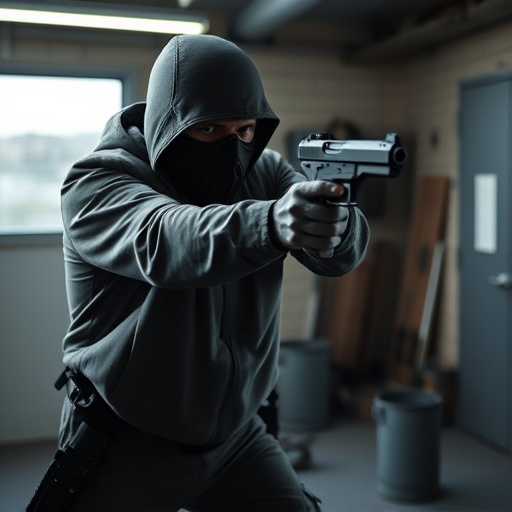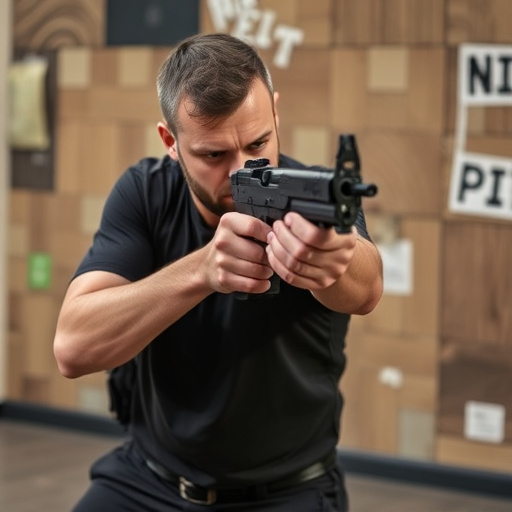Learn about stun gun components and safe handling. Understand local laws and obtain permits. Store securely and maintain regular inspections. Target large areas when using a stun gun as a last resort. Comply with regulations and practice responsible ownership. Keep detailed records for legal defense.
In today’s uncertain times, personal safety is paramount. Stun guns, as non-lethal self-defense tools, offer a powerful option for individuals seeking protection. This comprehensive guide delves into the basics of stun gun functionality, from understanding key components to mastering safe deployment techniques. Learn essential legal considerations and responsible ownership practices to ensure effective use of your stun gun for personal security without endangering others.
- Understanding Stun Gun Basics: Key Components and Functionality
- Safety Measures Before Deploying Your Stun Gun
- Effective Use Techniques to Maximize Protection
- Legal Considerations and Responsible Ownership Practices
Understanding Stun Gun Basics: Key Components and Functionality

Stun guns, also known as electronic control devices (ECDs), are non-lethal weapons designed to temporarily incapacitate an attacker through muscle confusion and pain. Understanding their basics is crucial when considering them for personal protection. A stun gun works by delivering a strong electric current through two electrodes, typically located at the tip of the device. When activated, it releases a high voltage, low-amperage charge that disrupts the electrical signals in the body, causing the muscles to spasm and the individual to experience intense pain and disorientation.
The key components of a stun gun include the power source (usually rechargeable batteries), the control mechanism (a trigger or switch), and the electrodes. To safely use a stun gun for protection, it’s essential to familiarize yourself with its parts, understand its range and effectiveness, and practice safe handling procedures. Regular maintenance and keeping the device charged are also vital to ensure its reliability in emergency situations.
Safety Measures Before Deploying Your Stun Gun

Before deploying a stun gun for self-defense, it’s crucial to understand and prioritize safety measures. Always ensure you’re in a legal jurisdiction where carrying and using a stun gun is permitted. Check your local laws and obtain any necessary permits. Proper training is essential; learn how to safely handle and deploy the device from credible sources or law enforcement agencies. Stun guns emit an electric shock, which can be dangerous if misused. Keep it out of reach of children and store it in a secure location, preferably locked up, to prevent accidental activation.
When using a stun gun for protection, maintain control at all times. Aim for the largest target area possible, typically the thigh or side, and activate the device only as a last resort when facing an imminent threat. Be aware of your surroundings; do not turn your back on potential dangers. After use, immediately check the person for any medical needs and contact emergency services if required. Regularly inspect your stun gun for functionality and proper working order to ensure it’s always ready when you need it most.
Effective Use Techniques to Maximize Protection

To effectively use a stun gun for personal protection, it’s crucial to employ specific techniques that maximize its safety and impact. Start by familiarizing yourself with the device; understand its range, activation mechanisms, and the intensity settings. Training sessions or demonstrations from law enforcement agencies can be highly beneficial. Always keep your stun gun easily accessible—in a purse, belt clip, or ankle holster—so you have it ready when needed.
When faced with an attacker, maintain a calm demeanor. Aim for the largest target area on the assailant’s body, typically the thighs, sides, or back. The goal is to stun them temporarily, giving you precious seconds to escape. Remember, the sound of the stun gun—though powerful—is not harmful; it serves as a warning and deterrent, allowing you to create distance and seek help.
Legal Considerations and Responsible Ownership Practices

Before considering how to safely use a stun gun for protection, it’s crucial to understand the legal considerations surrounding their ownership and usage. Stun guns, also known as electroshock weapons, are subject to varying regulations depending on your location. Some areas have strict restrictions on who can own them, while others permit their possession with certain conditions. It’s essential to research and comply with local laws to avoid legal repercussions.
Responsible ownership practices play a significant role in ensuring the safe use of stun guns. This includes proper storage, regular maintenance, and understanding the device’s limitations. Users should be trained in the correct usage techniques, such as targeting and de-escalation tactics, to minimize harm to oneself and others. Additionally, keeping detailed records of any incidents involving the stun gun can help in legal defense and responsible ownership.
Equipped with knowledge of stun gun basics, safety protocols, effective deployment techniques, and an awareness of legal considerations, you’re now ready to make informed decisions about using a stun gun for personal protection. Remember, while a stun gun can be a powerful tool, responsible ownership and safe usage are paramount. By understanding and practicing the key points discussed here, you’ll enhance your ability to protect yourself effectively in unexpected situations. Always prioritize safety when considering any self-defense tool, and stay informed about local laws regarding stun gun ownership and use.
